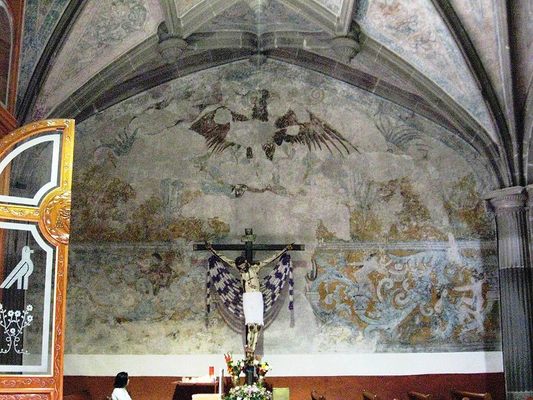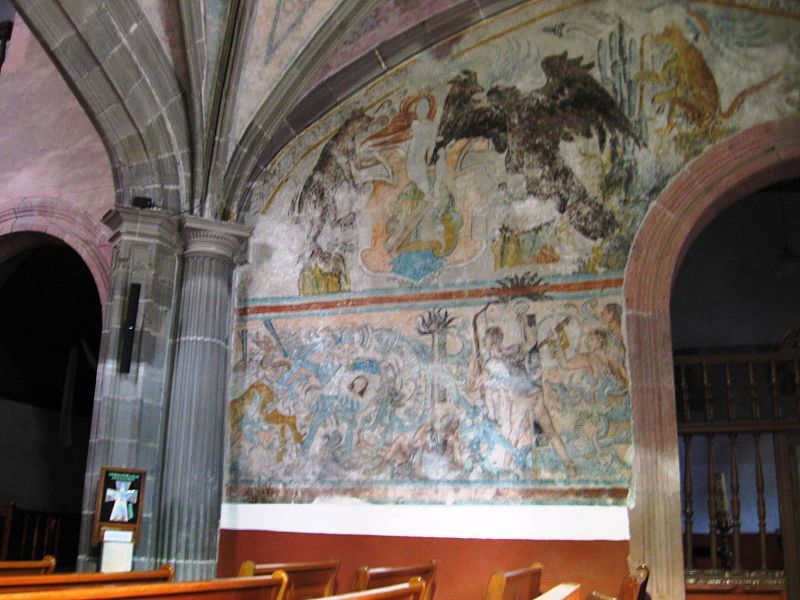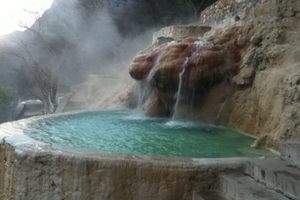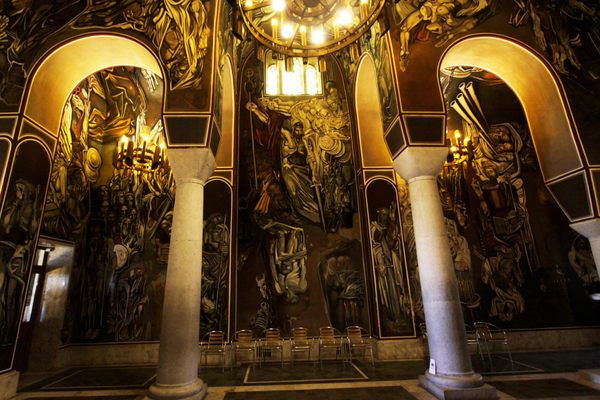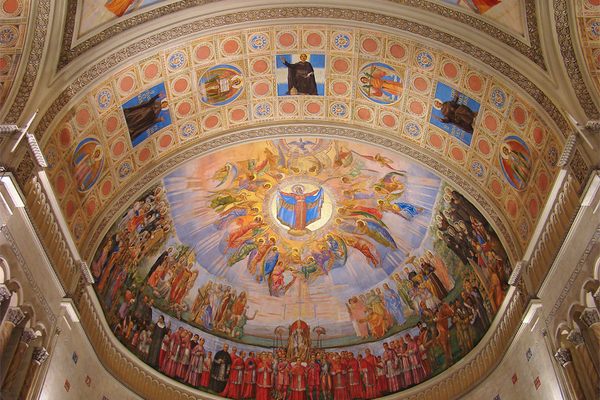About
Less than a hundred years after Spanish conquistadors decimated the Aztec Empire, Fray Andrés de la Mata de Barrios saw to the construction of the Church of San Miguel Archangel using local, forced indigenous labor. What resulted from the clash of these two cultures is one of the strangest overlaps of cultural and religious symbolism in Mexico, if not the New World.
In its completed form, the Church of San Miguel Archangel's architecture took on the fortress style preferred by the Augustinian monks during that period. All necessary elements of Catholic worship are present – an altar, a bell tower, naves, pews, confessions, etc. It is in the areas where typical frescoes depicting biblical scenes of, say, a benevolent God or Jesus' miraculous works, that the Church of San Miguel Archangel deviates from script.
The church's walls are covered in bright fresco murals depicting figures from Otomí mythology in costumes that predate the Spanish conquest. Jaguar knights, eagle knights, coyote warriors, and other fighters are seen locked in battle using Aztec weapons. To make matters more confusing, all displays of indigenous faith and beliefs, including everything listed above, were forbidden after the victory of the Spanish army. The murals at San Miguel Archangel, inexplicably, seem to have been given a pass.
Archaeologists would later determine that the symbolism behind the animal iconography amidst scenes of battle tell a mostly coherent story of a holy war, peppered with the occasional Christian touchstone for good measure. It would appear that to the anonymous artists and the fierce warriors they immortalized, the struggle between the old and the new orders was of central concern.
Just how the monks came to permit the vanquished to tell this forbidden story on the walls within a holy house, or how this visual text by the oppressed has survived since the mid-16th century, remains as radiant and mysterious in its details as the story told by murals themselves.
Related Tags
Published
July 21, 2015
Sources
- http://www.colonial-mexico.com/Central%20Mexico/ixm.html
- http://www.mexicodesconocido.com.mx/templo-y-ex-convento-de-san-miguel-arcangel-ixmiquilpan-hidalgo.html
- http://www.uaeh.edu.mx/investigacion/productos/5114/libro_pinturas_ixmiquilpan.pdf
- https://en.wikipedia.org/wiki/Ixmiquilpan#Church_of_San_Miguel_Archangel

